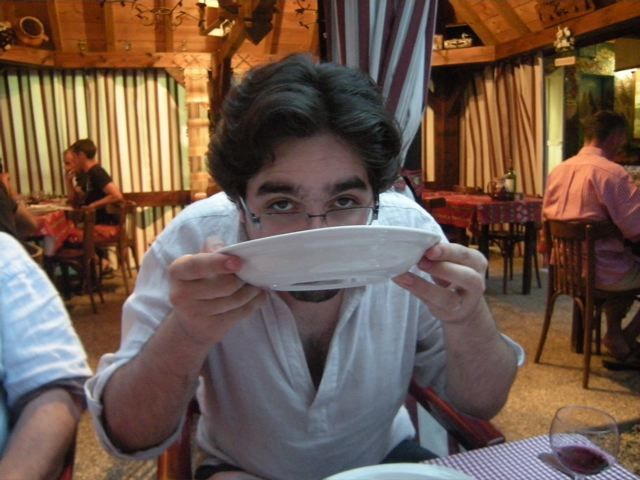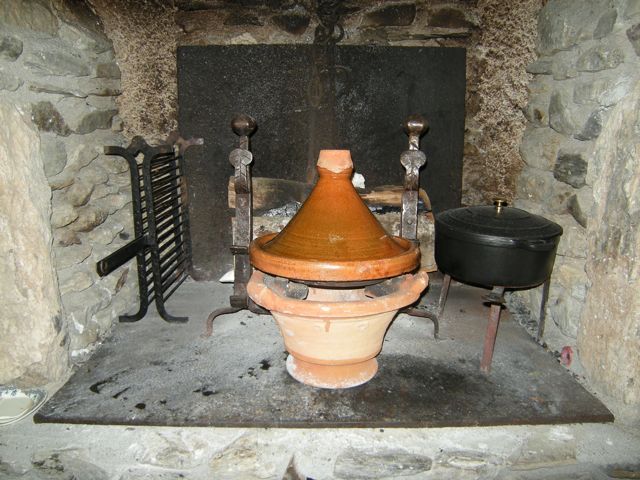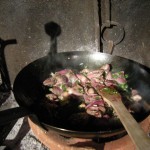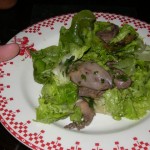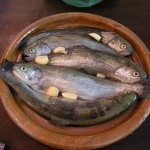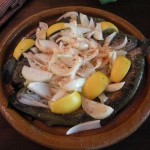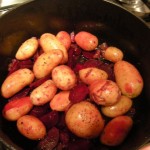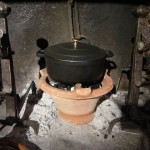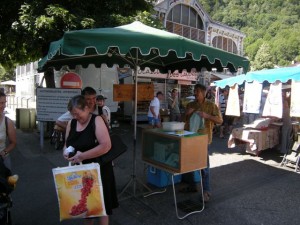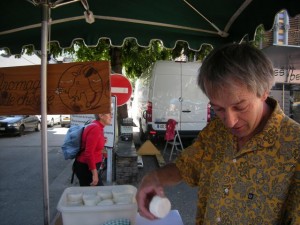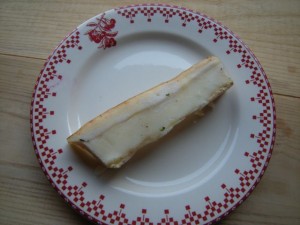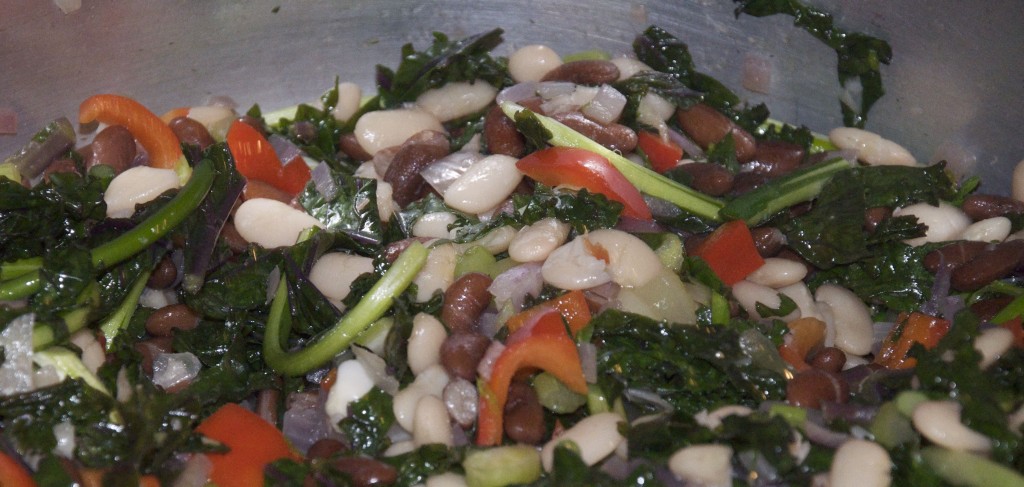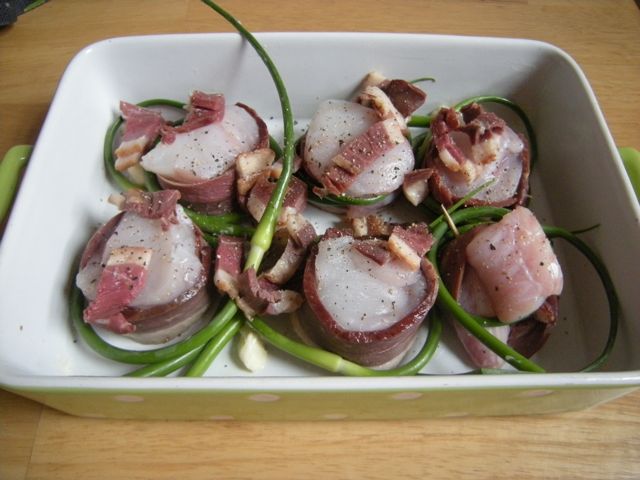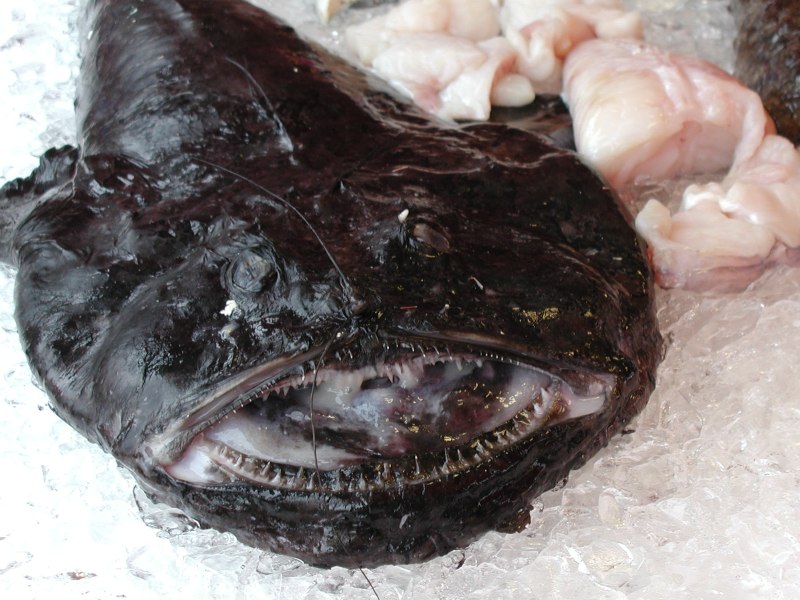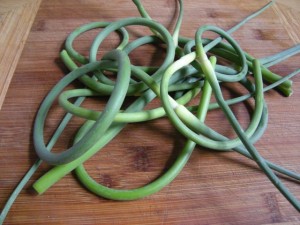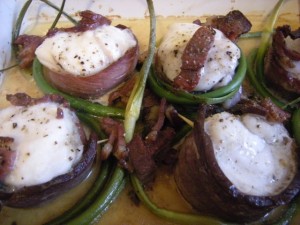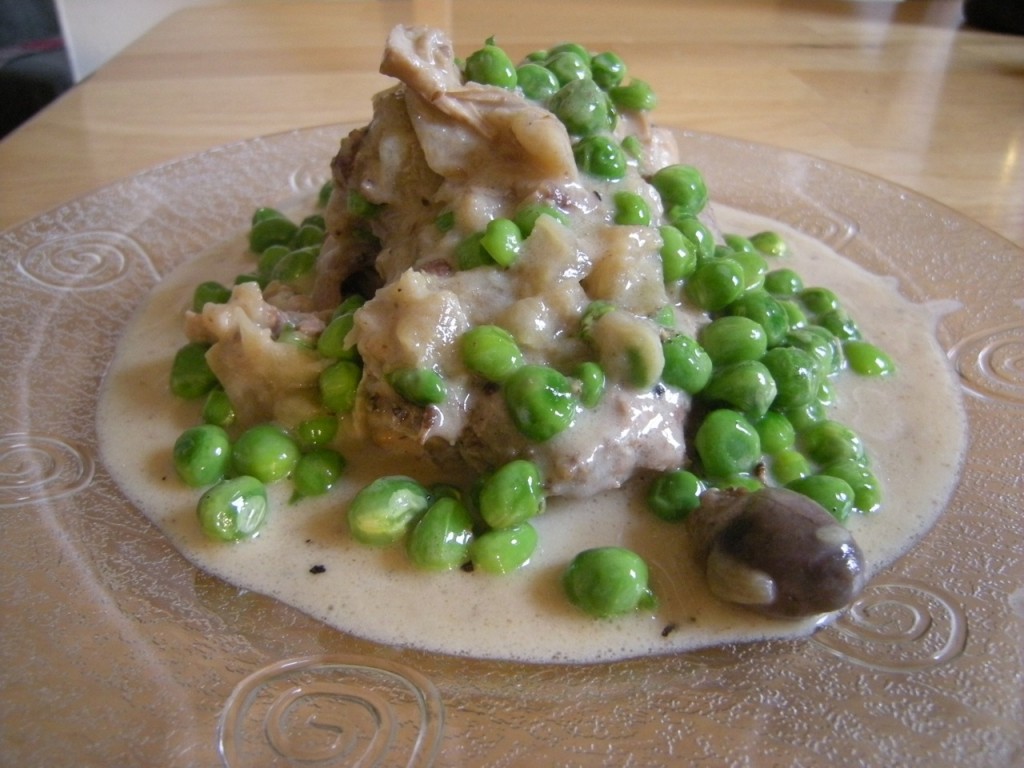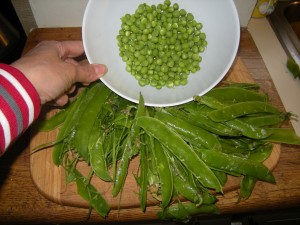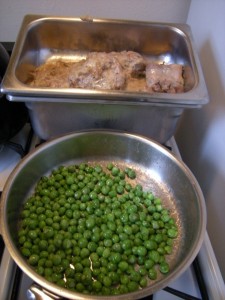Faire chabro is an ancient custom that is still very much in practice in the Southwest of France. It consists in adding about 1/3 of a glass of red wine to your soup plate once you have eaten two thirds of your broth. The proportions are very subjective to your taste, however you need to know that it would be totally unappropriate to pour your full glass of wine into the full plate of soup! Chabro needs, and is best with, a pungent broth. It is divine with the broth of a pot roast, a poule au pot, a strong consommé or a garburo. It is very important to drink it the way it is demonstrated by my older son Joseph (above) and my husband Pierre Joris, (below) — that is, to sip directly from the plate.
Frederic Mistral gives a Latin origin to the expression faire chabro. It would come from cabroù (goat in provencal) derived from the Latin capreolus and would mean: to drink like a goat. In our family we always observe this tradition but only when the broth is worth it and no matter where we are.
This specific occasion occurred at the excellent traditional hotel-restaurant La Rencluse is Saint-Mamet, where their broth (and food in general) is always outstanding. Jean-Marc and Françoise Chaléon are long time friends and very dedicated hoteliers-restaurateurs. Jean-Marc’s father, Pierrot Chaléon, had also apprenticed with my grandfather Joseph Peyrafitte. To this day there is still some reminiscing tastes of my grandfather’s recipes. I usually make several visit to their restaurant and mostly eat the menu du jour. It is a great deal and always good. Joseph and Yoori had some of the à la carte dishes. Yoori loved her escargots and Joseph the smoked salmon oeuf cocotte. Enjoy the pix and if you come to visit la Rencluse tell them Nicole sent you! I urge you to try to faire chabro if you haven’t already. Ah! & one more thing: it is very important to add one, or two, twists of fresh ground pepper before sipping it.


